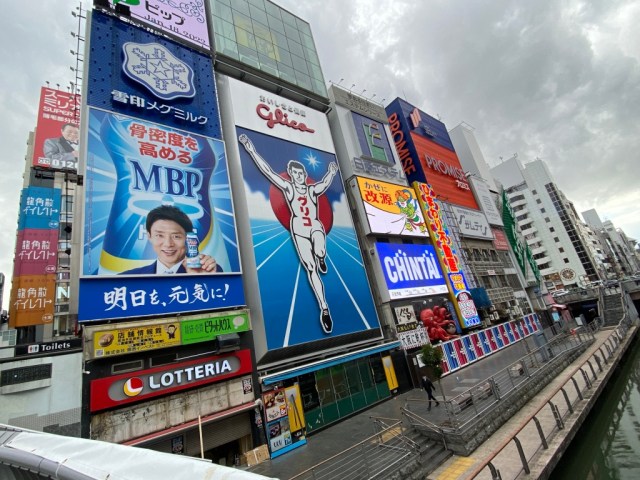
After viewing 60+ varieties of kimchi in a single shop alone, our reporter learns that she has much to learn about Korean cuisine.
While the Tsurubashi area in Osaka’s southeast Ikuno Ward has had a large presence of Korean and Korean Japanese residents for several generations now, it wasn’t until last year that three shopping districts banded together to brand the surrounding area as “Osaka Ikuno Koreatown.” With an official new name and website directory of shops and eateries, the locals are hoping to make Tsurubashi into more of a main destination for visitors to the city.
Our globetrotting Japanese-language correspondent Ikuna Kamezawa took this as the perfect opportunity to take a short trip to Osaka and share her findings with the rest of the team. After arriving in Osaka via Shinkansen from Tokyo, she then took a 15-minute train ride from Osaka Station to Tsuruhashi Station and began walking around.
Was this really the area around the front of a train station?! The fairly dim alleyways leading in all directions gave her a bit of a surprise. She was sure it would look different at night with bright signs lit up, but this still seemed too quiet for what she was used to. Despite being massive cities, it was interesting to compare how Osaka and Tokyo were different in many ways.
She thought that the area directly in front of Tsurubashi Station would be her final destination, but it turned out that she still had to walk about 10 minutes southeast to reach the newly dubbed Koreatown. Gradually, more and more shops selling Korean foods came into view.
Ikuna finally made it to an entry gate after walking through a quiet residential area. She knew that Osaka’s Koreatown would not be as large as Tokyo’s de-facto Koreatown in the Shin-Okubo district, so she decided to just keep walking because most places of interest would be concentrated on or near this main street.
By the way, the time she arrived was around 11:45 a.m. on a Tuesday.
To her eyes, she seemed to pass more people that looked like locals than tourists. She wondered if it were due to the time of her visit.
Now, Ikuna fully intended to have yakiniku (grilled meat) for lunch, but she wasn’t able to stroll past a shop called Tokuyama Shoten without stepping inside. An enticing aroma had lured her in…which turned out to be a massive egg-batter something!
Eggs sizzled on a hot plate as the woman behind the counter deftly cut the large rectangle into small squares. Ikuna was overcome by a sudden urge to yell out “Eomeoni!” (“Mom!”) in Korean even though she had never met this lady before in her life. There was no way she could leave without taking some of the delicious-smelling dish with her for 700 yen (US$6.00).
For sides, she also ordered a small bowl of tteokbboki (simmered cylindrical rice cakes) for 200 yen and dried squid gimbap (seawood rice rolls filled with vegetables and other fillings–similar to the look of makizushi) for 300 yen. She then proceeded to the dine-in area to eat it while it was hot.
▼ Tteokbokki in a spicy chili paste
▼ You can dine inside if you spend 300 yen or more.
Gazing down at her feast, she couldn’t help but feel that a homestyle warmth was radiating from them. Tteokbboki and gimbap weren’t uncommon in Japan, but she got the feeling that this style of shop didn’t really exist in Tokyo’s Shin-Okubo. It felt like an intimate Korean cafeteria and she suddenly wanted to visit Korea to find out if this was what all eateries felt like.
By the way, the egg batter dish turned out to be a delicious tilefish buchimgae (buchimgae is often called “chijimi” in Japanese and “Korean pancake” in English). She hadn’t realized that buchimgae could come without chives as an essential ingredient. She realized that there was a lot she had yet to learn about Korean cuisine.
Afterwards, she enjoyed leisurely visiting a variety of shops focused on Korean celebrities and cosmetics. Even while doing so, she got the sense that these kinds of idol and younger-generation-themed shops were purposely limited in number so that Osaka’s Koreatown could remain first and foremost a place for the locals to come and buy small dishes and kimchi. There weren’t as many places where you might take flashy photos of food to upload to social media as you would find in Shin-Okubo, but there were more places where you could simply enjoy traditional, homestyle Korean cooking.
▼ A few of Ikuna’s self-indulgent purchases
It was also way easier to walk around than in Shin-Okubo. This place was perfect for those who want to enjoy the Koreatown experience but don’t want to deal with crowds.
Before heading back to the capital, she wanted to stop at popular kimchi specialty store Yamada Shoten to buy some food souvenirs. The shop had had a constant line outside of it ever since the morning.
Yamada Shoten sold a staggering 60-80 varieties of kimchi on a regular basis.
Ikuna also realized her assumption that kimchi = fermented cabbage or daikon was hugely incorrect. Here she saw a dizzying variety of ingredients being used, from pickled bamboo shoots and myoga (Japanese ginger) as vegetable bases to pig’s feet, oysters, and sea cucumbers, among other meat products.
The possibilities for kimchi were endless.
She eventually selected scallop kimchi (about 1,000 yen for 190 grams [6.7 ounces]) and Japanese yam kimchi (about 500 yen for 300 grams). She had special plans for a certain someone to taste them once she got back to Tokyo.
That certain someone turned out to be none other than fellow SoraNews24 reporter Seiji Nakazawa! Seiji had actually grown up in Osaka’s Tsurubashi area and his parents still lived there. While they were ethnically Japanese, he had developed into the person he was while being surrounded by the familiar aroma of kimchi on a daily basis. How would he like the scallop kimchi from his home area?
“URMF!!” was all Ikuna could get out of him for his initial reaction.
“Hasn’t this gone bad?!” he eventually choked out.
The Shinkansen ride from Osaka to Tokyo was just under three hours. Ikuna had taken great care in the way that she had transported her food souvenirs, but had she accidentally let them spoil without realizing it? In that case, she would feel extremely apologetic to both Seiji and Yamada Shoten. She decided to take a bite of the dish for herself.
Their resulting conversation went something like this:
Ikuna: “Hey, this is totally delicious.”
Seiji: “Wait a minute, isn’t it weird that it’s so soft?!”
Ikuna: “Really? Isn’t that how it’s supposed to be?”
Seiji: “But somehow…it smells really fishy!”
Ikuna: “Well yeah, that’s because it’s scallops. From the sea.”
Seiji: “Sca–scallops?!!”
Ikuna: “Yup, scallops.”
Seiji: “I thought it was daikon…next time, tell me ahead of time! Hahaha”
Ikuna had initially neglected to tell him exactly what he was eating, so he decided to try the dish again with his new understanding.
Sure enough, now that his brain had the correct info he thought it was delicious.
And thus Seiji unexpectedly learned that he also knew next to nothing about kimchi–which was quite sad considering he had grown up virtually inside of Osaka’s Koreatown.
The taste of freshly made kimchi was dramatically more flavorful than the jarred kind you can buy at the supermarket. The aroma was also more permeating–the two fellow reporters felt that they had really been transported to Korea. Seiji actually confessed that he had gotten sick of its smell when he was young, but grew to like it again after moving to Tokyo.
And at least now he had learned the difference between daikon and scallops. He would have to bring back a new kind of kimchi for Ikuna the next time he visited his home city and let her try it without telling her anything first.
Reference: Osaka Ikuno Koreatown
All images © SoraNews24
● Want to hear about SoraNews24’s latest articles as soon as they’re published? Follow us on Facebook and Twitter!
[ Read in Japanese ]

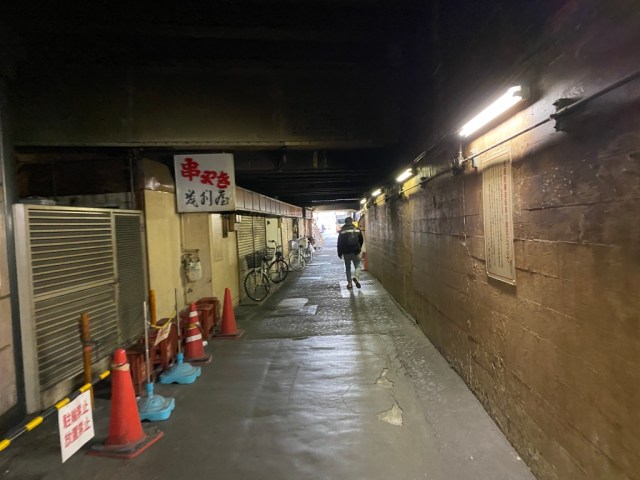
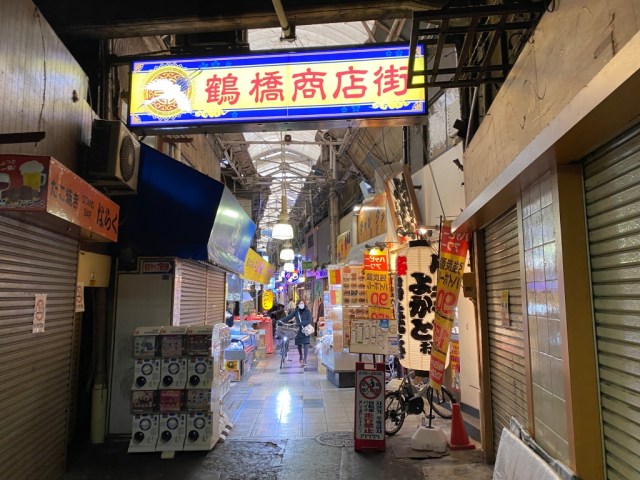
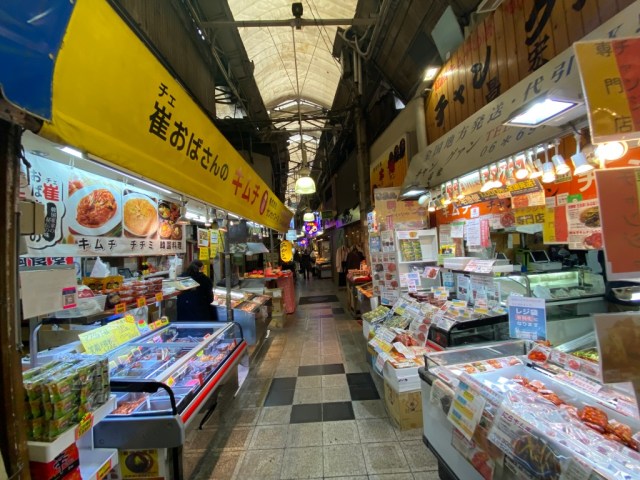
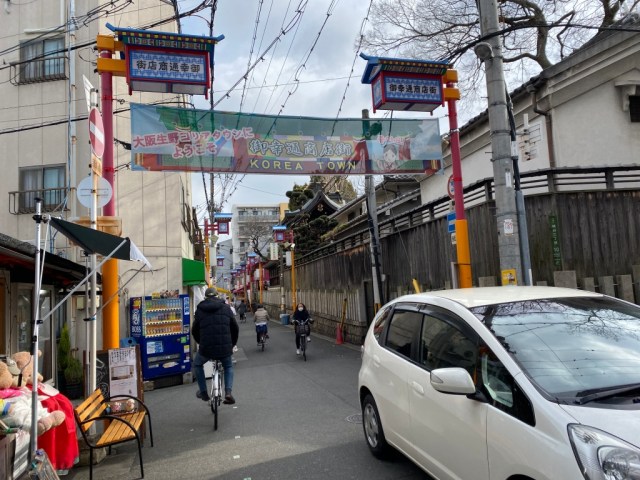
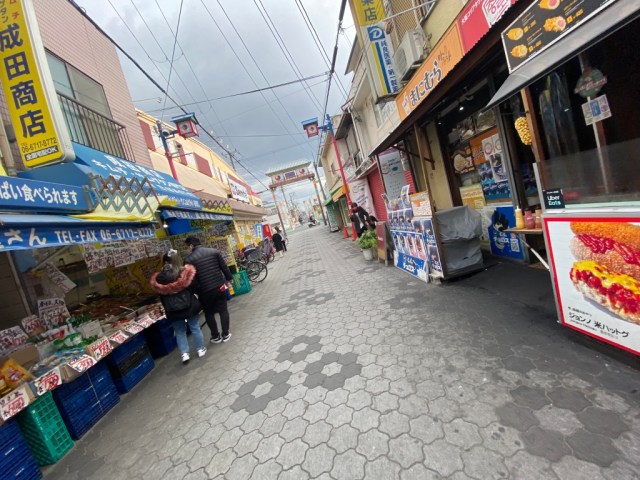
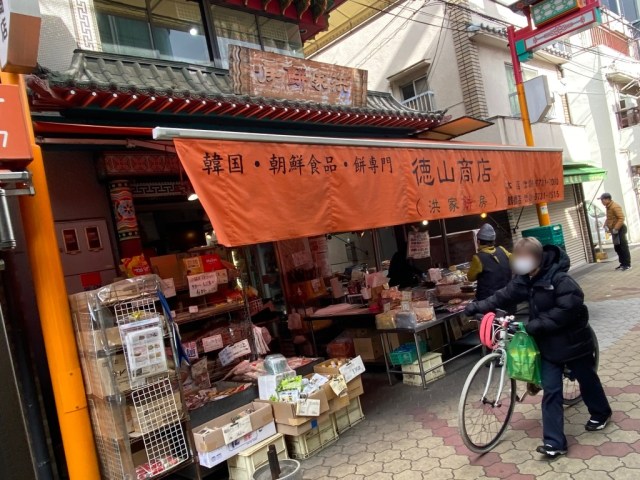
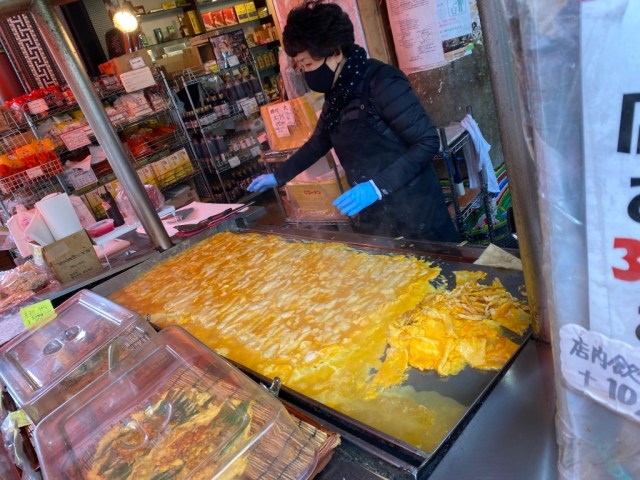


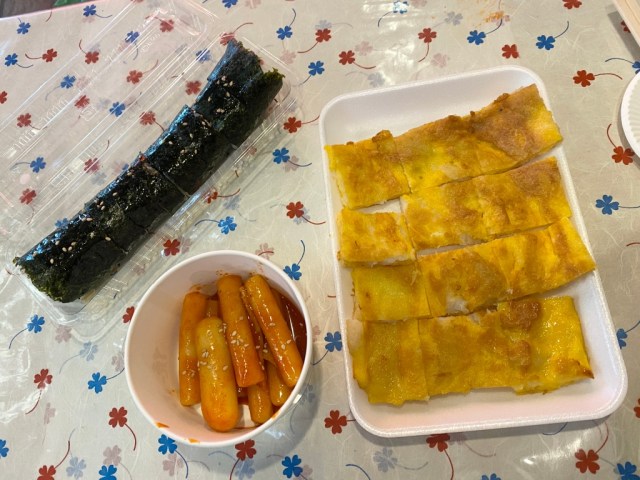
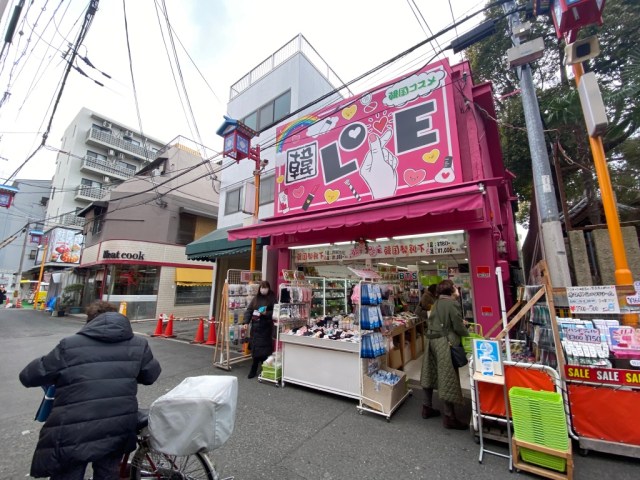
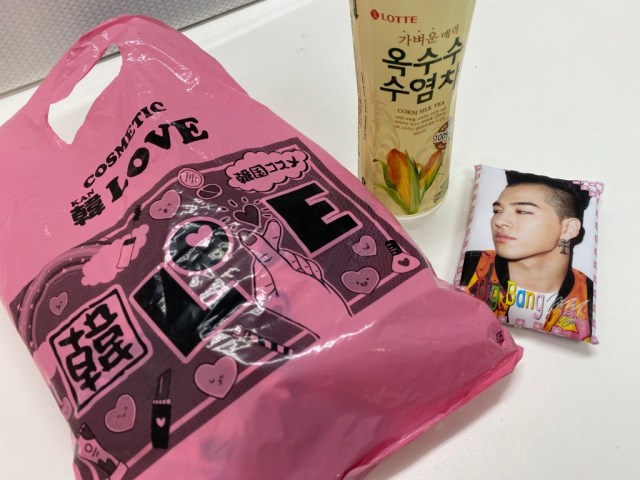
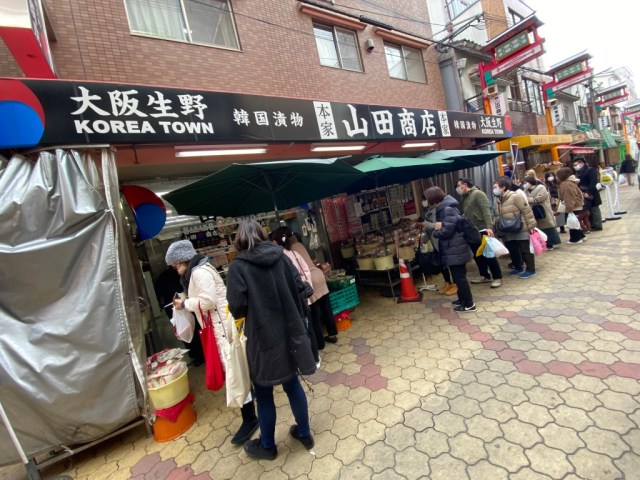
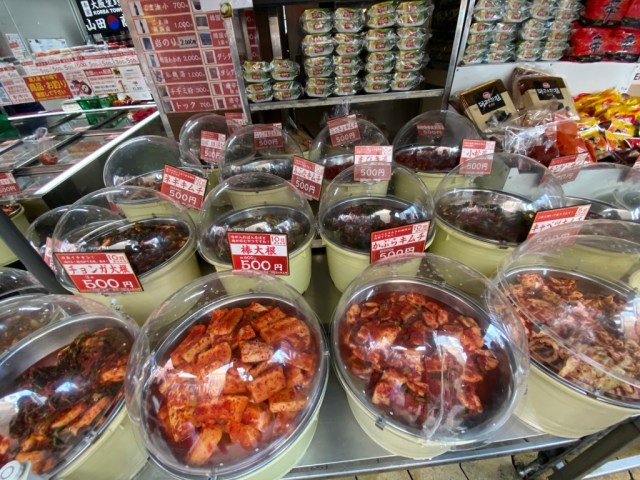
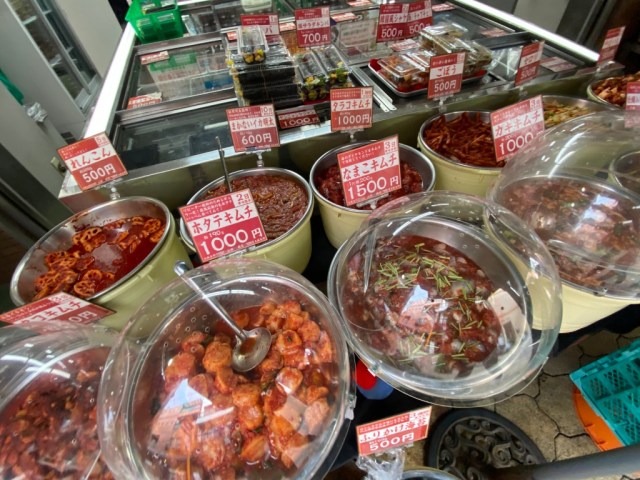
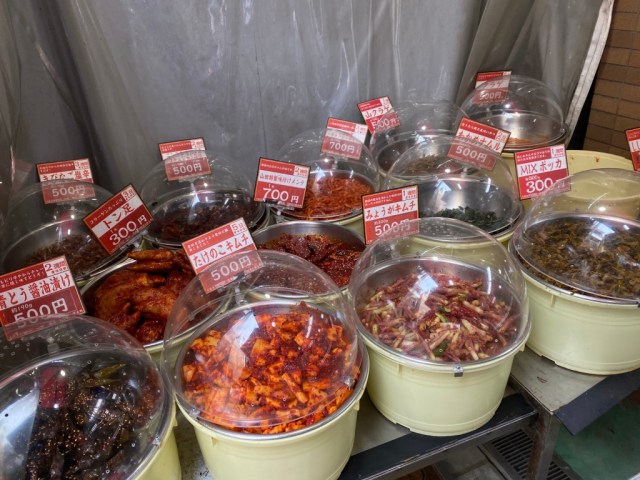
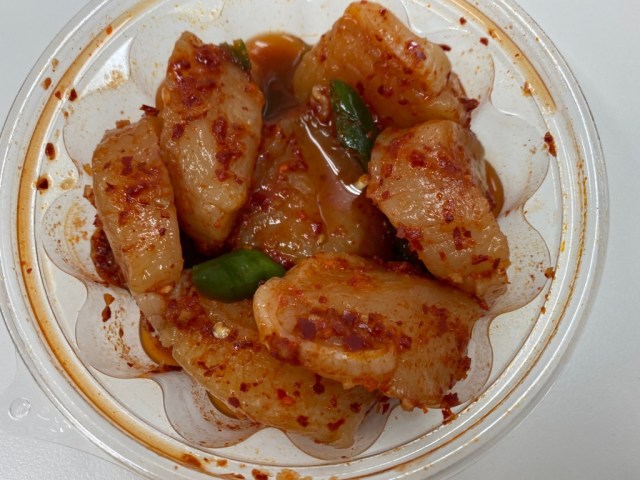
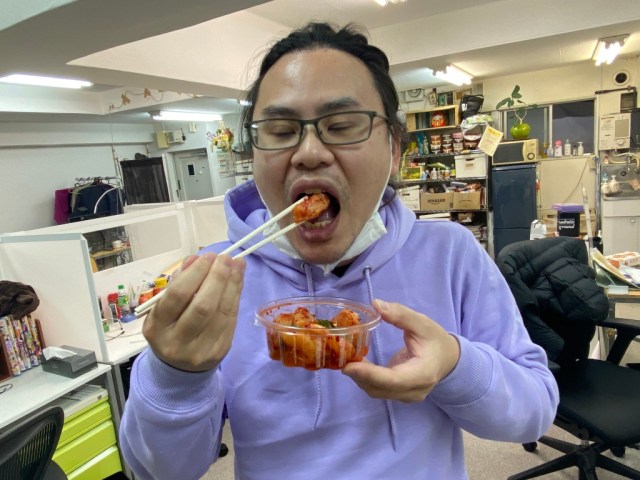
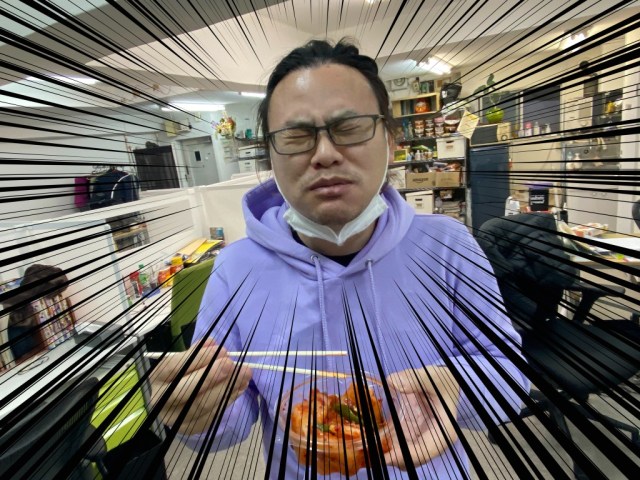


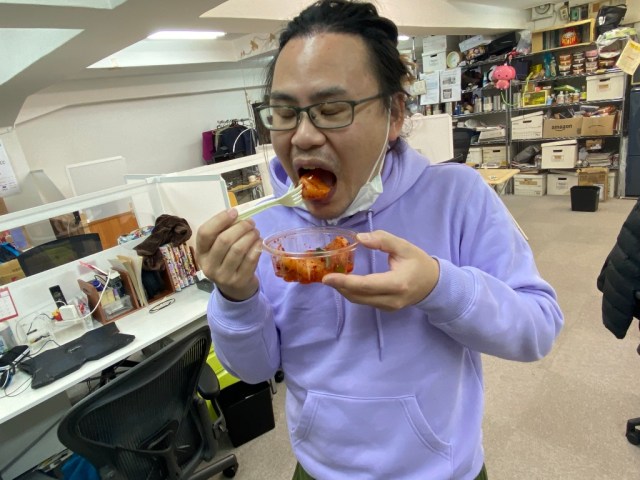
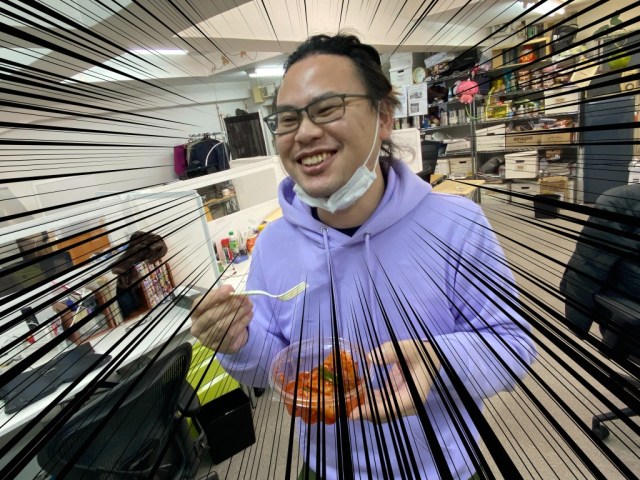
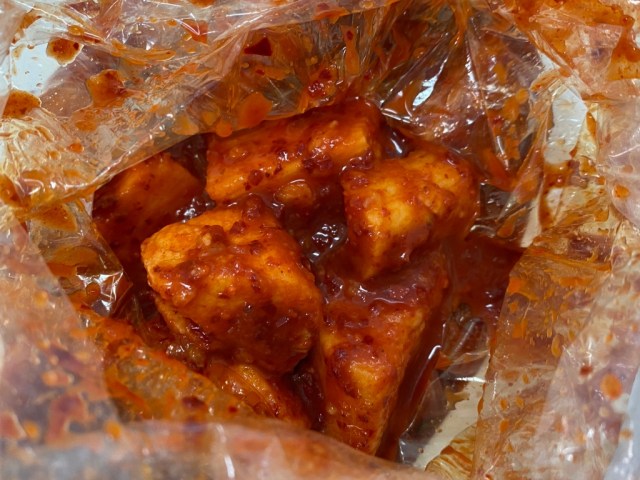

 Our reporter orders food from Uber Eats, falls in love, learns that fate works in mysterious ways
Our reporter orders food from Uber Eats, falls in love, learns that fate works in mysterious ways We joined the 10,000 otaku who recently congregated in Madrid for Japan Weekend
We joined the 10,000 otaku who recently congregated in Madrid for Japan Weekend Do people in Osaka really eat crunchy fried noodles with curry? We ask a local, then try it out
Do people in Osaka really eat crunchy fried noodles with curry? We ask a local, then try it out We try a rotating sushi restaurant in New Delhi, are surprised to find no rotating sushi
We try a rotating sushi restaurant in New Delhi, are surprised to find no rotating sushi “Hey Singaporean taxi driver! Take us to the best restaurant in Singapore!”
“Hey Singaporean taxi driver! Take us to the best restaurant in Singapore!” Foreigner’s request for help in Tokyo makes us sad for the state of society
Foreigner’s request for help in Tokyo makes us sad for the state of society Japanese city loses residents’ personal data, which was on paper being transported on a windy day
Japanese city loses residents’ personal data, which was on paper being transported on a windy day Harajuku Station’s beautiful old wooden building is set to return, with a new complex around it
Harajuku Station’s beautiful old wooden building is set to return, with a new complex around it Akihabara pop-up shop sells goods made by Japanese prison inmates
Akihabara pop-up shop sells goods made by Japanese prison inmates Japanese ramen restaurants under pressure from new yen banknotes
Japanese ramen restaurants under pressure from new yen banknotes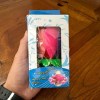 Celebrate another year of life by putting it in jeopardy with this birthday candle flower
Celebrate another year of life by putting it in jeopardy with this birthday candle flower Sandwiches fit for a sumo served up in Osaka【Taste Test】
Sandwiches fit for a sumo served up in Osaka【Taste Test】 Doraemon found buried at sea as scene from 1993 anime becomes real life【Photos】
Doraemon found buried at sea as scene from 1993 anime becomes real life【Photos】 Ghibli Park now selling “Grilled Frogs” from food cart in Valley of Witches
Ghibli Park now selling “Grilled Frogs” from food cart in Valley of Witches Red light district sushi restaurant in Tokyo shows us just how wrong we were about it
Red light district sushi restaurant in Tokyo shows us just how wrong we were about it McDonald’s new Happy Meals offer up cute and practical Sanrio lifestyle goods
McDonald’s new Happy Meals offer up cute and practical Sanrio lifestyle goods All-you-can-drink Starbucks and amazing views part of Tokyo’s new 170 meter-high sky lounge
All-you-can-drink Starbucks and amazing views part of Tokyo’s new 170 meter-high sky lounge French Fries Bread in Tokyo’s Shibuya becomes a hit on social media
French Fries Bread in Tokyo’s Shibuya becomes a hit on social media Studio Ghibli releases new action figures featuring Nausicaä of the Valley of the Wind characters
Studio Ghibli releases new action figures featuring Nausicaä of the Valley of the Wind characters New private rooms on Tokaido Shinkansen change the way we travel from Tokyo to Kyoto
New private rooms on Tokaido Shinkansen change the way we travel from Tokyo to Kyoto Studio Ghibli glasses cases let anime characters keep an eye on your spectacles
Studio Ghibli glasses cases let anime characters keep an eye on your spectacles Tokyo Tsukiji fish market site to be redeveloped with 50,000-seat stadium, hotel, shopping center
Tokyo Tsukiji fish market site to be redeveloped with 50,000-seat stadium, hotel, shopping center Beautiful Ghibli sealing wax kits let you create accessories and elegant letter decorations【Pics】
Beautiful Ghibli sealing wax kits let you create accessories and elegant letter decorations【Pics】 Studio Ghibli releases Kiki’s Delivery Service chocolate cake pouches in Japan
Studio Ghibli releases Kiki’s Delivery Service chocolate cake pouches in Japan New definition of “Japanese whiskey” goes into effect to prevent fakes from fooling overseas buyers
New definition of “Japanese whiskey” goes into effect to prevent fakes from fooling overseas buyers Our Japanese reporter visits Costco in the U.S., finds super American and very Japanese things
Our Japanese reporter visits Costco in the U.S., finds super American and very Japanese things Studio Ghibli unveils Mother’s Day gift set that captures the love in My Neighbour Totoro
Studio Ghibli unveils Mother’s Day gift set that captures the love in My Neighbour Totoro New Japanese KitKat flavour stars Sanrio characters, including Hello Kitty
New Japanese KitKat flavour stars Sanrio characters, including Hello Kitty More foreign tourists than ever before in history visited Japan last month
More foreign tourists than ever before in history visited Japan last month New Pokémon cakes let you eat your way through Pikachu and all the Eevee evolutions
New Pokémon cakes let you eat your way through Pikachu and all the Eevee evolutions Sales of Japan’s most convenient train ticket/shopping payment cards suspended indefinitely
Sales of Japan’s most convenient train ticket/shopping payment cards suspended indefinitely Sold-out Studio Ghibli desktop humidifiers are back so Totoro can help you through the dry season
Sold-out Studio Ghibli desktop humidifiers are back so Totoro can help you through the dry season Japanese government to make first change to romanization spelling rules since the 1950s
Japanese government to make first change to romanization spelling rules since the 1950s Ghibli founders Toshio Suzuki and Hayao Miyazaki contribute to Japanese whisky Totoro label design
Ghibli founders Toshio Suzuki and Hayao Miyazaki contribute to Japanese whisky Totoro label design Tokyo’s most famous Starbucks is closed
Tokyo’s most famous Starbucks is closed One Piece characters’ nationalities revealed, but fans have mixed opinions
One Piece characters’ nationalities revealed, but fans have mixed opinions We asked a Uniqlo employee what four things we should buy and their suggestions didn’t disappoint
We asked a Uniqlo employee what four things we should buy and their suggestions didn’t disappoint Princesses, fruits, and blacksmiths: Study reveals the 30 most unusual family names in Japan
Princesses, fruits, and blacksmiths: Study reveals the 30 most unusual family names in Japan Hey, Croatian taxi driver! Take us to the restaurant with the best štrukli in Zagreb
Hey, Croatian taxi driver! Take us to the restaurant with the best štrukli in Zagreb Hey, Thai tuk-tuk driver! Take us to the best Thai restaurant in this part of Bangkok!
Hey, Thai tuk-tuk driver! Take us to the best Thai restaurant in this part of Bangkok! We stumbled upon “Pudding Street” in Hanoi, so of course we had to investigate
We stumbled upon “Pudding Street” in Hanoi, so of course we had to investigate We try European Cup Noodle Soba flavors to see which ones come out on top 【Taste test】
We try European Cup Noodle Soba flavors to see which ones come out on top 【Taste test】 We rode 11 hours on a sleeper train from Shanghai to Shenzhen and learned a valuable lesson
We rode 11 hours on a sleeper train from Shanghai to Shenzhen and learned a valuable lesson We visit a ramen bar in Croatia, meet a whole new version of ramen we can’t wait to make at home
We visit a ramen bar in Croatia, meet a whole new version of ramen we can’t wait to make at home What’s it like to watch a sumo tournament in Tokyo during the pandemic?
What’s it like to watch a sumo tournament in Tokyo during the pandemic? Japanese cake becomes a hit with foreign tourists, but is it worth the hype?
Japanese cake becomes a hit with foreign tourists, but is it worth the hype? Instant ramen with 40 billion lactic acid bacteria on sale now
Instant ramen with 40 billion lactic acid bacteria on sale now Ramen and girls bar: Where you can talk to women who aren’t dressed like hosts or maids
Ramen and girls bar: Where you can talk to women who aren’t dressed like hosts or maids We get our hands on a coveted Yodobashi lucky bag, this time the beauty and health gadget box
We get our hands on a coveted Yodobashi lucky bag, this time the beauty and health gadget box Our Japanese reporter visits Czechia’s famous beer spas and boozily bathes in a bath of beer
Our Japanese reporter visits Czechia’s famous beer spas and boozily bathes in a bath of beer Japan’s big eats just got even bigger at this little-known cafe
Japan’s big eats just got even bigger at this little-known cafe Have you tried Tokushima ramen? No? You should (says our obsessed Japanese-language reporter)
Have you tried Tokushima ramen? No? You should (says our obsessed Japanese-language reporter) Kimchi cocktail offers a taste of Korea that no Korean would actually endorse
Kimchi cocktail offers a taste of Korea that no Korean would actually endorse Taste-testing Japan’s beef tongue/gacha beef vending machine in Sendai【Taste test】
Taste-testing Japan’s beef tongue/gacha beef vending machine in Sendai【Taste test】
Leave a Reply